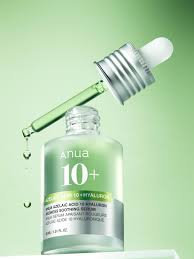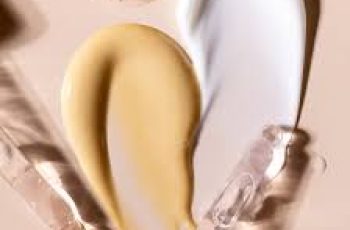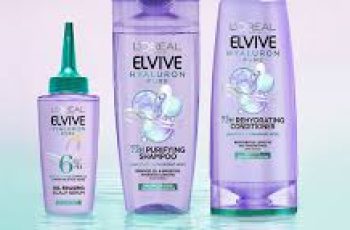
The Unsung Hero of Acne Treatment: Why Azelaic Acid Deserves a Spot in Your Skincare Routine
When you think about the most effective acne-fighting ingredients, certain names immediately come to mind—salicylic acid, benzoyl peroxide, and retinoids like retinol often top the list. These active ingredients are renowned for their ability to unclog pores, reduce inflammation, and promote skin cell turnover. They’ve been around for decades and are well-known for delivering visible results. However, there’s another powerful yet often overlooked ingredient that deserves just as much recognition: azelaic acid.
Although not as famous as its acne-fighting counterparts, azelaic acid is a multi-tasking powerhouse that treats not only acne but a variety of other common skin concerns, including rosacea, hyperpigmentation, and uneven skin tone. It’s especially useful for individuals who have sensitive skin or find stronger ingredients too irritating.
What Is Azelaic Acid?
Azelaic acid is a naturally occurring dicarboxylic acid found in whole grains such as wheat, barley, and rye. It can also be produced by Malassezia furfur, a type of yeast that lives on normal skin. Its natural origin makes it a gentle yet effective solution for many skin issues, including inflammatory acne and pigmentation disorders.
Dr. Stacy Chimento, a board-certified dermatologist at Riverchase Dermatology in Gulf Harbor Islands, Florida, explains: “Azelaic acid is commonly formulated into creams, foams, or gels. It reduces inflammation, promotes faster skin cell turnover, and helps to kill the bacteria that cause acne. It’s a very versatile ingredient.”
The ingredient is also known for its keratolytic properties, meaning it helps prevent the buildup of dead skin cells that can clog pores and lead to acne. In addition, it offers mild antibacterial and antioxidant benefits, making it a suitable treatment for people prone to blemishes or skin sensitivity.
How Does Azelaic Acid Work for Acne?
Azelaic acid works in several ways to treat and prevent acne. It targets Propionibacterium acnes (now known as Cutibacterium acnes), the bacteria responsible for breakouts, and helps to normalize the shedding of dead skin cells. This reduces the likelihood of clogged pores and blackheads.
It’s also a powerful anti-inflammatory. For those suffering from inflamed acne—characterized by red, swollen pimples and pustules—azelaic acid helps to calm the skin and reduce visible irritation. “As an anti-inflammatory agent, azelaic acid reduces redness, puffiness, and discomfort,” says Dr. Chimento.
Another added bonus: azelaic acid is effective in lightening post-inflammatory hyperpigmentation (PIH), a common concern for people with acne-prone or darker skin. It works by inhibiting the enzyme tyrosinase, which is responsible for melanin production. This makes it an excellent choice for those who want to fade dark spots or melasma without turning to harsh bleaching agents.
How to Use Azelaic Acid in Your Skincare Routine
Azelaic acid is generally well-tolerated and can be used both morning and evening. However, there are a few important application tips to maximize its effectiveness and minimize potential irritation.
First, always cleanse your face thoroughly before applying the product. Dr. Aza Halim, another board-certified dermatologist, recommends waiting about 15 minutes after cleansing to allow your skin to dry completely. This helps reduce the risk of stinging or irritation upon application.
Azelaic acid should be applied as a thin layer over the affected area—this could be your entire face or just specific areas like your cheeks, forehead, or chin. After the product is fully absorbed, follow up with a moisturizer to lock in hydration and further soothe the skin.
Dr. Halim also advises: “Azelaic acid should blend seamlessly into the skin. Avoid leaving a visible border or applying too thick a layer, as this could result in blotchy, uneven skin texture.”
If you’re just starting out with azelaic acid, especially if you have sensitive skin, it’s best to introduce it gradually. Begin with every other day or just a few times a week, then slowly increase usage as your skin builds tolerance.
Can You Combine Azelaic Acid With Other Ingredients?
Azelaic acid is generally compatible with most skincare ingredients, which makes it easy to incorporate into existing routines. You can safely use it alongside ingredients like niacinamide, hyaluronic acid, and ceramides, which help moisturize and protect the skin barrier.
However, there are some combinations to approach with caution. “Using azelaic acid with other acids, particularly beta-hydroxy acids (BHAs) like salicylic acid, may increase the risk of dryness or irritation,” warns Dr. Chimento. If you’re using a product that already contains salicylic acid or glycolic acid, be sure to space out the application times or alternate days.
As always, it’s a good idea to consult with a dermatologist before combining multiple active ingredients, especially if you’re using prescription treatments or experiencing skin sensitivity.
Are There Any Side Effects?
While azelaic acid is considered gentle compared to other acne treatments, it’s not entirely without side effects. Some users may experience mild burning, tingling, or stinging upon application. Other potential side effects include redness, dryness, flaking, or peeling of the skin.
These symptoms are usually temporary and diminish as your skin gets used to the ingredient. However, in rare cases, allergic reactions such as hives or severe itching may occur. If you notice any of these more serious symptoms, discontinue use immediately and seek medical advice.
Again, for sensitive skin types, it’s important to ease into azelaic acid slowly. Start with a lower concentration and monitor your skin’s response before moving to daily use.
Best Azelaic Acid Products to Try
If you’re ready to give azelaic acid a try, here are some top-rated products to consider:
Paula’s Choice 10% Azelaic Acid Booster
This multitasking formula doesn’t just rely on azelaic acid—it also includes salicylic acid and licorice root extract to calm inflammation, reduce blemishes, and improve overall skin tone. It’s ideal for those looking to treat acne and pigmentation at the same time.
The Ordinary Azelaic Acid Suspension 10%
A budget-friendly option that delivers powerful results. This cream-gel formula brightens skin tone, reduces blemishes, and provides antioxidant protection—all for under $10. It’s a great starting point for azelaic acid beginners.
FaceTheory Lumizela Azelaic Acid Serum A10
Formulated with 10% azelaic acid, this serum is enhanced with soothing botanicals like oat extract and aloe vera. It’s particularly beneficial for individuals dealing with both acne and rosacea, thanks to its calming properties.
Sodium Azelate Topical 10%
A refined derivative of azelaic acid, sodium azelate is paired with Vitamin C and niacinamide to further reduce redness, pigmentation, and oil production. Ideal for those seeking a more targeted treatment for oiliness and discoloration.
Typology Oil Control Essence 10% Azelaic Acid
This French skincare brand delivers a lightweight serum that helps balance sebum levels while fighting blemishes. It’s especially popular among users with combination or oily skin types.
PCA SKIN Pigment Gel
Designed for those struggling with dark spots and melasma, this pigment-reducing formula combines azelaic acid with lactic and kojic acids to even out skin tone and prevent future discoloration.
Dr. Brandt Dark Spots No More Triple Acid Stain Minimizing Concentrate
This high-performance serum targets stubborn pigmentation with a potent blend of tranexamic acid, azelaic acid, and phytic acid. It’s dermatologist-approved for fading stubborn dark spots over time.
TULA Skincare Clear It Up Acne + Skin Correcting Gel
Want clear skin without sacrificing hydration? This gel blends azelaic acid with salicylic acid and probiotic extracts to target acne while keeping the skin’s barrier healthy and moisturized.
Final Thoughts: Should You Add Azelaic Acid to Your Routine?
Azelaic acid may not be the most talked-about skincare ingredient, but it’s certainly one of the most effective—especially for people looking to treat acne, redness, and hyperpigmentation without harsh side effects. Its versatility, gentle nature, and proven results make it an ideal choice for many skin types, including sensitive and combination skin.
If you’re struggling to find an acne solution that doesn’t irritate your skin—or if you’re looking for a multi-tasking product that can also help brighten your complexion—azelaic acid is worth considering. Just be sure to patch test first, introduce it gradually, and consult your dermatologist if you’re unsure how to combine it with your existing products.


